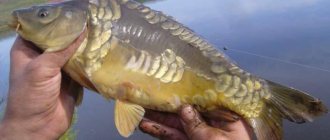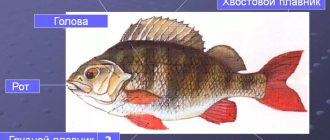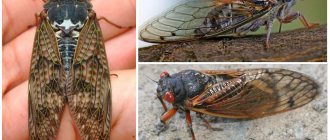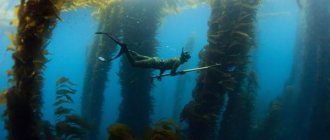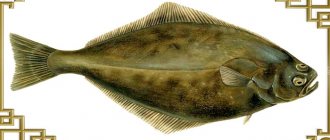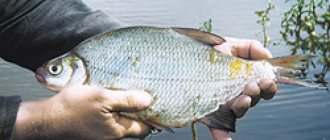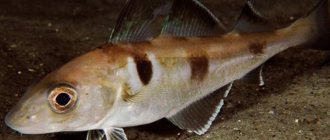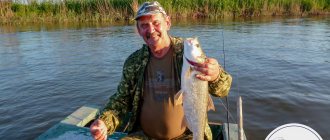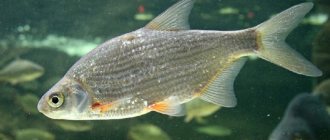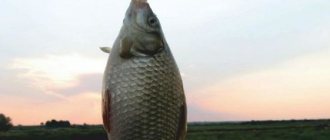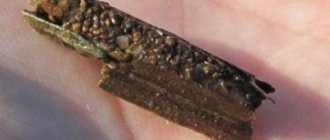Are bream and bream different fish or not?
Bream and bream are considered traditional inhabitants of the basins of the North, Caspian, Baltic, Azov and Black Seas. They belong to the so-called industrial fish species, so they are seasonally harvested by both small and large companies, as well as private fishermen. At the same time, the majority does not have a question about their relationship. They both belong to characteristic representatives of the Cyprinidae family, the genus Bream of the same name.
Despite the differences in name, from a biological and genetic point of view there is no difference between these fish; the underbream is just a young and immature individual (up to 3 years old). This means that, despite various differences, such a fish, as it grows and develops over some time, will necessarily transform into a real adult bream, with all the corresponding features. At the same time, young and mature individuals can quite successfully exist in the same habitat.
Did you know? The largest documented bream was caught in England in 2014.
A local amateur fisherman managed to hook a specimen weighing 7.1 kg.
Who is this bream?
Gustera is a carp fish. As a rule, it lives in schools and is similar to bream.
Habitats
This type of fish is common in the waters of the Caspian, Baltic and Black Seas. Also, silver bream can be caught in ponds and small rivers with a slow current and considerable depth.
As statistical data show, this breed of fish actively reproduces in reservoirs and backwaters, where a clay bottom with silt admixtures predominates. The largest individuals are found at depth and in flat sections of rivers, and small silver breams live in shallow water among thick thickets.
Characteristic features of the silver bream
Perhaps one of the most important and pleasant features for fishermen is that silver breams live and breed in flocks. Moreover, the schools are always quite large, which increases the chances of coming home with a serious catch.
The ideal time to catch this fish is morning or afternoon, as it practically cannot see in the dark.
Gustera has:
- tall body, flattened laterally;
- small but noticeable hump;
- notched caudal fin with identical blades along the length;
- thick, tight-fitting scales;
- small head;
- medium sized eyes;
- oblique mouth, which extends in the form of a tube;
- a keel behind the fins that is not covered with scales;
- bluish-gray color (during spawning, males develop white protrusions on their heads, and their fins acquire a more pronounced color).
The meat of the bream is bony and does not have a pronounced taste. Biological scientists classify this breed as a low-value commercial breed.
What is the difference between bream and white bream?
Like any other representative of the fauna, young and adult bream have strict differences. First of all, these include the size, color, body structure and lifestyle of a particular specimen. There are many reasons for this, including purely genetic ones, since before reaching maturity each individual must go through a certain development cycle. It is on the basis of this knowledge that, of necessity, one can easily distinguish different forms of fish from each other.
Size and weight
These characteristics are the first thing you should definitely pay attention to. Young individuals are small in size, so their length often does not exceed 15–20 cm. The average size of a real bream is in the range of 30–45 cm , while occasionally it can reach a length of 50–70 cm. In turn, the weight of young fish is not exceeds 1 kg, and on average is 600–800 g. In an adult, it reaches 4–5 kg (in some cases more).
Did you know? The rarest bream in the world is considered to be the so-called Black Amur. It spawns and lives exclusively in the waters of the Amur, as well as nearby reservoirs, and is considered an endangered species in the Red Book.
Body shape and structure
In most cases, the outline and external structure of the carcass of bream and white bream are identical. They have the same shape, as well as the relationship between body length and head volume. However, since the bream is an immature individual, its head is somewhat smaller.
At the same time, it is necessary to take into account the fact that real bream almost always has the advantage of having a denser and more rounded body, while the body of an immature individual is thin and flat. That is why the undergrowth, together with the silver bream and the sopa, is often referred to as the so-called “plywood fish”.
Color
It is on the basis of the color of the outer covers that most fishermen often carry out conditional differentiation between bream and bream. Young fish have a light silver color, due to which they are often visible even at a depth of more than 1 m . An adult large bream is almost invisible in a natural reservoir. Its color is dark, predominantly rich bronze, bronze-brown or brown tones, while the back has a darker shade.
Important! Young fish are also characterized by abundant mucus on the outer covers, while in adults the scales and skin are almost dry.
Lifestyle
There are also serious differences in the lifestyle and behavior of the bream and the more adult individual. Young fish spend most of their time searching for high-calorie food for maximum accelerated weight gain. At the same time, the bream is quite cautious and timid, so it gathers in large schools and is found exclusively in shallow water, in places with minimal current and a sandy bottom.
Sexually mature fish have a more “full life”. In most cases, each such individual leads a moderately solitary lifestyle, gathering only in small flocks that hunt small mollusks and aquatic insects. Bream can only be found at depth, both in secluded corners of the reservoir and in areas with high currents.
You will be interested to know how to cook bream soup.
Spawning
In the spring, sexually mature individuals gather in large schools and migrate to a permanent spawning site from year to year . First, fish up to 5 years old are collected here, and then the most mature and large ones. During spawning, the main color of the outer cover of the bream changes, its scales acquire a darker shade, and the skin becomes covered with white blue. In the white bream, due to an insufficiently developed reproductive system, spawning is not observed.
Video: bream spawning
Podleschik
Young bream weighing up to 1 kg is considered a bream. Found in rivers and lakes. The body is rounded, one third of its length in height. The fin stands out and is located on the back. Unlike bream, it has a large mouth with 5 pharyngeal teeth. It eats exclusively bottom-type food, curling its lips into a tube.
Important point! The peculiarity of the bream is that the caught fish leaves marks in the form of mucus on the hands. Get rid of liquid only with a rag, otherwise marks will remain on things.
The bream cannot be found in a wild river with pebbles. The density of the meat is comparable to roach. To live, the fish loves the river surface with sand or silt, where it quickly hides from danger.
To learn more:
The royal fish of the sturgeon family - sterlet
Like its older brother, the bream moves exclusively in groups. They prefer a quiet and measured lifestyle. Cold periods are spent in pits. During the winter period they are often caught by fishermen. It breeds in shallow places where there is a lot of algae. Lays eggs on leaves and stems of plants. During the spawning period, the bream creates a lot of noise.
Podleschik
Males are marked with white and later scarlet tubercles. In the southern territories, reproduction starts in April, and in the northern parts - a month later. On average, a female produces 100,000–150,000 eggs.
To catch bream, less feeding is required than for bream. In addition to standard feed in the form of fine fractions, you need to use cereals. As bait it loves the smells of fruits and vanilla, and roasted seeds. You need to fish with a float, donk or feeder. For bait, use white bread, smeared with vanilla or fruit flavoring, worms or maggots.
In the cold season - bloodworms. The fish is very shy, so a thin hook is used to catch it. Shot weight, float up to 1.5 grams and fishing line 0.16.
The fish smells the bait after half an hour, so you should be patient. The period without biting lasts from one to two hours.
Distinctive features of catching bream and bream
Due to some differences in behavior, fishing for bream and underbream in each individual case has its own characteristics. For catching the former, the optimal time period is considered to be winter and spring. During this period, due to a decrease in the volume of natural food supply, fish readily respond to any animal bait (worm, maggot, bloodworm, etc.). It is almost impossible to catch bream in the summer; it does not like heat, so at this time it often stays closer to the bottom of the reservoir. The bream is considered a more fastidious and timid inhabitant of the reservoir.
Quite often, such fish become prey not only for humans, but also for all kinds of aquatic predators, so by nature they have an increased distrust of the world around them. This is why the bream’s bite is inactive; this will require a huge amount of feeding and at least several hours. Only in this case will it be possible to purposefully catch at least the minimum catch. In this case, the gear should be as miniature as possible, and the fishing line should be thin and almost invisible.
Video: white bream and bream
Spring and spawning time
With the onset of spring, nature awakens. The underwater inhabitants are gradually waking up. The habitats and habits of bream are changing again. The fish begins to move, leaving the holes and riverbeds. After the ice melts, flocks increasingly move out to warm shallow waters, to future spawning grounds. Willingly eats the eggs of other fish that come out to spawn earlier.
Shortly before the start of spawning, the bream tries on its characteristic “wedding outfit”. The scales take on a dark tint, and numerous warts appear on the body. The fish becomes rough and actively feeds. At times, feeding turns into the so-called pre-spawning meal.
We suggest you read: How to salt fish for drying or drying? Salting fish: recipe, duration || Salting fish for drying
Spawning begins when the water warms to about 15 degrees. This occurs in May and early June. In southern places it can begin as early as April. In the northern ones - even in the middle of summer. Small mature breams emerge first, followed by large, adult “bast shoes.”
Shallow waters rich in vegetation are selected for spawning grounds. The “wedding” itself takes place in warm, sunny weather, often accompanied by noisy splashes. It is easy to distinguish spawning bream from other fish species. The tall body and silvery sides are visible from a long distance. Massive, flat backs with a protruding fin are periodically visible on the surface.
Bream caviar has a yellowish color, like most cyprinids. The strips of eggs are tightly attached to aquatic vegetation. After about a week, the larvae hatch. The transformation of larvae into fry occurs within a month. After two months, the fry can grow up to ten centimeters in length, under favorable conditions.
How to distinguish a male bream from a female
It is often not so easy to distinguish a male bream from a female; even with a detailed comparison, it will be clear that they look almost identical. But despite this, individual individuals may exhibit characteristic, purely sexual characteristics.
Important! Mature and young individuals do not like increased noise. That is why such fish are found only far from populated areas, closer to the center of the reservoir.
These primarily include:
- the shape of the head , in females it is somewhat concave in the dorsal-abdominal direction, in males, on the contrary, it is more convex;
- in males the body is elongated and less rounded, in females it is slightly shortened. At the same time, the abdomen is more round and convex;
- the presence of caviar , only females have it;
- body shape during spawning , females become more rounded, and the abdomen can significantly increase in size. Males, in turn, have a flat abdomen, and small blunt-pointed tubercles form on the entire surface of their body. At first they have a white tint, and then become amber-yellow.
The behavior of fish during spawning will also be different. Males, first of all, surround the spawning territory and free it from all kinds of predators and other dangers. Females stay closer to the center, especially during the active release of eggs. From a biological point of view, bream and bream are considered the same fish.
The difference between them lies only in the age, as well as the phase of development of the individuals, and this is what directly affects the differences in their morphology. At the same time, bream is considered more preferable for industrial and private fishing; it is not only distinguished by its large size, but also by the increased taste characteristics of the pulp.
Appearance
It is difficult to take a photo of a bream in natural conditions, but as soon as the fish is caught, it immediately becomes clear that the body of the fish is quite high - the maximum height can reach 2/3 of the body length, and is strongly flattened on the sides. The bream has a small head, a small mouth with a “blunt” snout. The entire body of the fish is covered with large scales and mucus. The fins are gray - narrow on the back, small pectoral fins, and a wide anal fin. The fish has a keel, uncovered by scales, between the pelvic fins and the anal fin.
The color of the scales depends on the place of residence and age. In adult individuals, the scales on the back are brown or gray, on the sides they are brownish-golden, and on the belly they are yellow. Young bream have silvery scales.
It is very difficult to say what the maximum weight of bream is, since new record catches are constantly appearing; the latest such record is considered to be a bream about 150 cm long and weighing more than 16 kg. However, it is difficult to catch such a “fish”; most often you come across fish about 30-40 cm long and weighing 3-5 kg. Fish weighing less than 0.5 kg are considered bream.
Bream underwater. Young bream.
Bream in summer and early autumn
After the end of spawning, the fish remain in place for several more days. Then they go deeper, having recovered from the disease, they begin to actively feed again.
At the height of summer, with the advent of heat, bream actively feeds, mainly at dawn and late evening. The small bream feeds throughout the day. Medium-sized and large bream continue to be awake at night, preferring to rest during the day in the depths. It is in the dark that fishermen manage to catch the largest, trophy specimens.
Throughout the summer, when the water is warm enough, bream show a clear interest in plant foods. He willingly eats all kinds of cereals, dough, bread and many other foods. Among the smells, he really likes sweet aromas, such as vanilla or chocolate. He is also partial to the smell of coriander, hemp, sunflower and nuts.
It has been noticed that bream in rivers are very fond of dung worms. Pond or lake bream often ignores such food. Apparently this is explained by the fact that worms are often washed away from the banks by streams from rain. Thus, worms become completely natural food.
The small bream fish is quite nimble and voracious. It is these specimens that novice fishermen most often catch on the hook. In some places, the flocks are so numerous that the bite continues almost all day, even in the heat.
At the end of summer the nights become longer. The behavior of bream changes noticeably in August and September. Night feeding becomes less intense, and daytime feeding, on the contrary, becomes longer.
